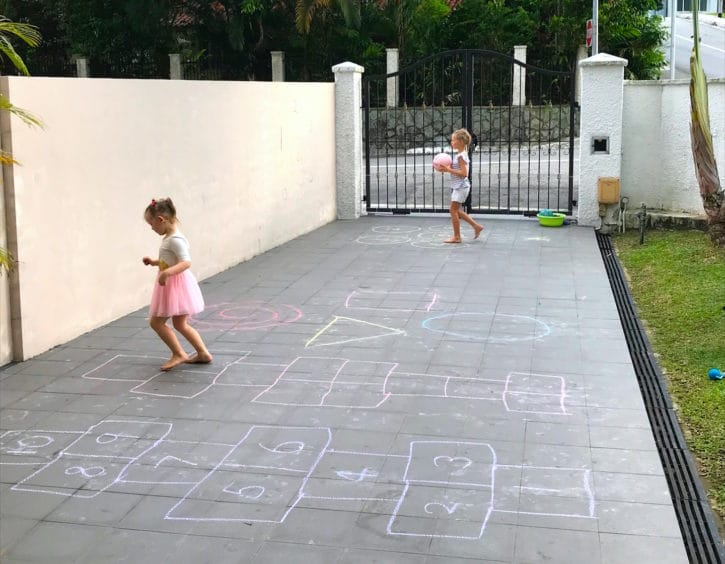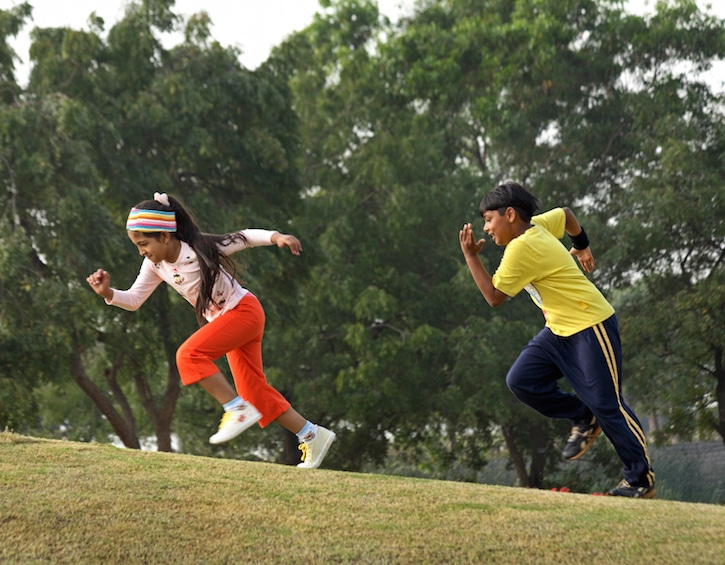
Get your kids off the iPads and into physical activity with these tips to improve gross motor skills, in turn developing fine motor skills
Movement is essential in helping little ones reach their full potential in school and life. All learning begins with the body. The body is the brainʼs first teacher so if we can engage and elicit a variety of movements from a young age, kids will then be able to tackle more complex skills later.
Playing fun movement games with my own children at home has enabled them to pick up essential skills quicker and allowed them to flourish once at school. There is evidence to suggest that there is a link between gross and fine motor skills. Helping a child learn to hold a pencil correctly can take time, and developing motor skills from a young age will enable this process to dramatically speed up.
There are lots of activities you can do at home to help develop these skills. The ABC’s of physical education are Agility, Balance, Coordination which are all vital for a child’s overall motor and cognitive development. If we can help our child at home with these elements it will allow the individual child to naturally progress.
Movement builds sensory perceptions and pathways in the brain which allow the child to think, learn and engage successfully. As Gill Connell and Cheryl McCarthy (2013) say in their book A Moving Child is a Learning Child, “The more the child moves, the more they know”.

Here are some fun simple activities you can do at home with your little ones to encourage physical development:
1. Take your child to a playground (indoors or outdoors!) and let them learn how to climb up to the top of the climbing frame.
2. Hopscotch at home with chalk if outside or use tape on a floor inside. Use different skipping patterns using one or both feet, etc.
3. Mark out various patterns and pathways with chalk or tape using heel-toe walking, side stepping, cross pattern walk, reverse heel-toe walking, tight rope walking, and bunny hopping along different angled lines and shapes.
4. Target throwing outside/ inside into baskets or into hoops, with bean bags or small balls. Call out numbers and add in maths questions for older children.

Read more: Things To Do On Bad Weather Days: Best Indoor Activities For Kids
5. Throw a ball up in the air and clap. You can use a balloon or small scarf instead for younger kids. Switch this up by rolling a ball along the floor to a partner (sitting and then progress to standing and against a wall in or outside).
6. Throw a ball into a hoop and then flip the hoop over and keep doing this so the throw becomes further away.
7. Throw a bean bag into a hoop from a set point. Alternate using overarm and underarms movements – practice throwing the bean bag to different distances.
8. Play tag games. For example, stuck in the mud or freeze tag.
9. Long Jump – static (standing jump) then progress to jump with a run. Take off on one foot and land with two feet. Make it a competition to see who can jump the furthest.
10. Make an obstacle course using pillows and small obstacles (that involves the kids having to make their way under and over objects) in your apartment or house.

11. Bowling: knock over skittles (use anything you can from around the house) with a small ball.
12. Take your child out to one of Hong Kong’s many cycling trails regularly.
13. Running: Use a timer, work on improving their best time, vary distances, etc.
14. Ask your child to pair up socks and throw them into the baskets to help with the laundry.
15. Play with slime or play dough to develop finger control.
16. Dance and yoga. Watch “Just Dance” and “Debbie Doo” videos on Youtube. We love Cosmic Yoga for online yoga sessions interpreted with kids stories, too
17. Play musical bumps/musical chairs or statues.
Equipment list:
You only need basic equipment that can be sourced easily such as chalk, masking tape, scarves, balloons, balloon balls, bean bags, small balls, hoops etc.
If you practice these fun activities with your kids, your little one will quickly become “a moving child”. The activities will teach your child fair play and improve their ability to follow simple rules. It will also teach your child how to take turns and how to care for and support others. They will hopefully have a lot of fun doing the activities, which will encourage appropriate responses to success and failure, alongside improving their health and well-being.
 View All
View All










 View All
View All





 View All
View All


 View All
View All










